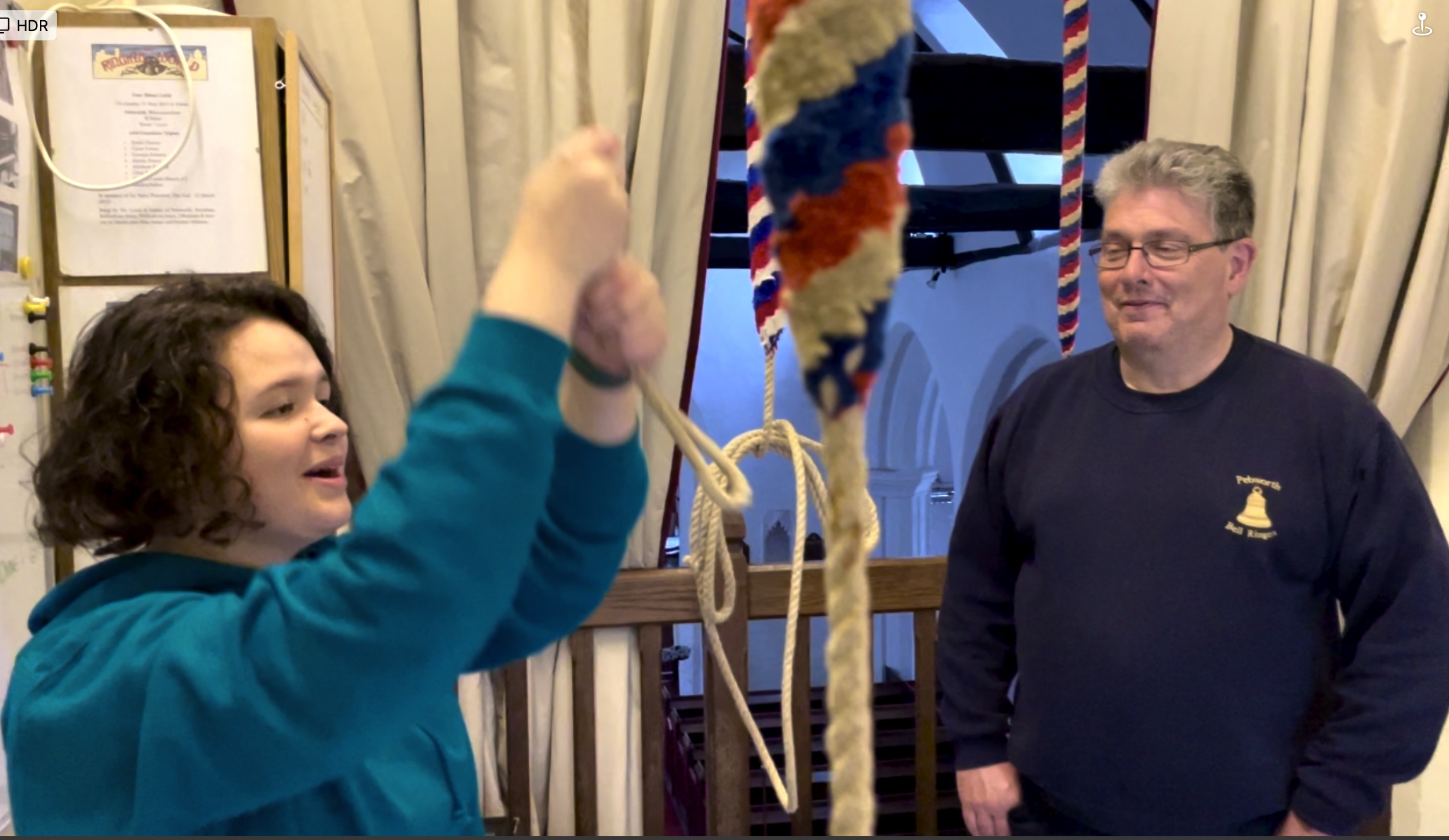
Bell Handling
Learning to ring can be lots of fun and bell handling is the very first stage of that process. When you learn, an experienced ringer and tutor will support you as you make progress. Initially they will do most of the work, but over time, you will take over, until you can ring on your own. Following this, they can offer advice as you improve, gradually standing back further as you become more confident.
Becoming completely competent and confident is like driving a car… it takes different people different amounts of time, but it will certainly take quite a few weeks/months!
Handling a bell is about muscle memory and developing a good technique. This is where a good instructor will be invaluable, as they will pick up on any bad habits before you can commit them to memory!
Learning to stretch your arms and use your body mass to your advantage, all helps to make the ringing effortless. Standing in just the right position and keeping the rope taught with a good ‘follow through’ will make sure that catching the sally is easy and that you will be able to cope with bells of varying size and weight. Like any physical activity, good technique is the key to success.
Once you have mastered bell handling, it will be time to join in practices with the rest of the team and at that point, a whole new learning experience starts… Matching your ringing speed to the other bells creates a whole new set of problems for the learner, as you have to make sure your bell reaches the balance point at every hand stroke and back stroke.
Watching the rest of the team and matching your own effort is like driving in city traffic… it is much more complicated than when alone on the open road!
And when you have mastered that, it is time to start to think about the intricacies of change ringing…. and that is a journey that will keep you learning and developing for the rest of your ringing career!
Finding a Tutor
Most towers will have someone who will teach learners, and if not, they will probably know someone who does… Either way, if you can find a qualified instructor to teach you, that will probably be very beneficial and speed your learning process.
In recent years, the ringing community has seen the development of the Association of Ringing Teachers. ART is a group of training experts that have developed a teaching program for those who train new ringers. They run instructor training courses and assessments and provide support and resources for those who teach. If you learn with an ART instructor, you will be getting top quality training… however, that is not to say that there aren’t many other trainers who are not ART qualified, but are no less capable!
At Pebworth, we are very fortunate in having 3 members of the team who are ART qualified and two others who are teach but have not formally trained. We work as a team, so in many respects we all learn from and support each other!
As you develop your ringing skills, you will undoubtedly start to mix more ringers from other towers… watch and learn from their style and technique. You will undoubtedly see good and indifferent techniques… so observe and try to absorb the good bits! You could perhaps ask others for advice and a critique of your own technique… It is something all ringers need to be aware of, as bad habits form quite naturally in all of us!
Different Bells
When you learn, you will probably start learning on a medium weight bell of 2-400kg (4-6cwt). Bells in this range are not too fast or slow and require enough effort to be easier to judge…
Within most towers, there will be lighter or heavier bells and these will require slight variations in technique. However, there are towers where all the bells are tiny or very large! A heavy ring could range from 500-1500kg, whilst the lightest might all be below 100kg!
Small bells are very easy to over-pull and because they move very quickly, can be more tricky to ring and far less forgiving than much larger bells. At towers with the smallest bells, there are always a good supply of bell stays, as breaking them is remarkably easy to do!
Larger bells go much slower, but will of course require more energy to keep them moving. The result is that longer more sustained pulling is required… however, because of the extra mass and momentum, you need to think ahead to manage your effort… a sharp tug when you come up short will probably have little effect! In the same way that when driving a very large vehicle, you have to allow more time and space, it is just the same with bigger bells. However, it is actually much harder to have an accident and break a stay as over pulling is not an easy thing to do!
Learning to Ring
A nice little documentary about taking a crash course in bell handling… and finding that realistically, learning takes time!
Rising and Lowering
A training masterclass in the art of raising and lowering a bell.
